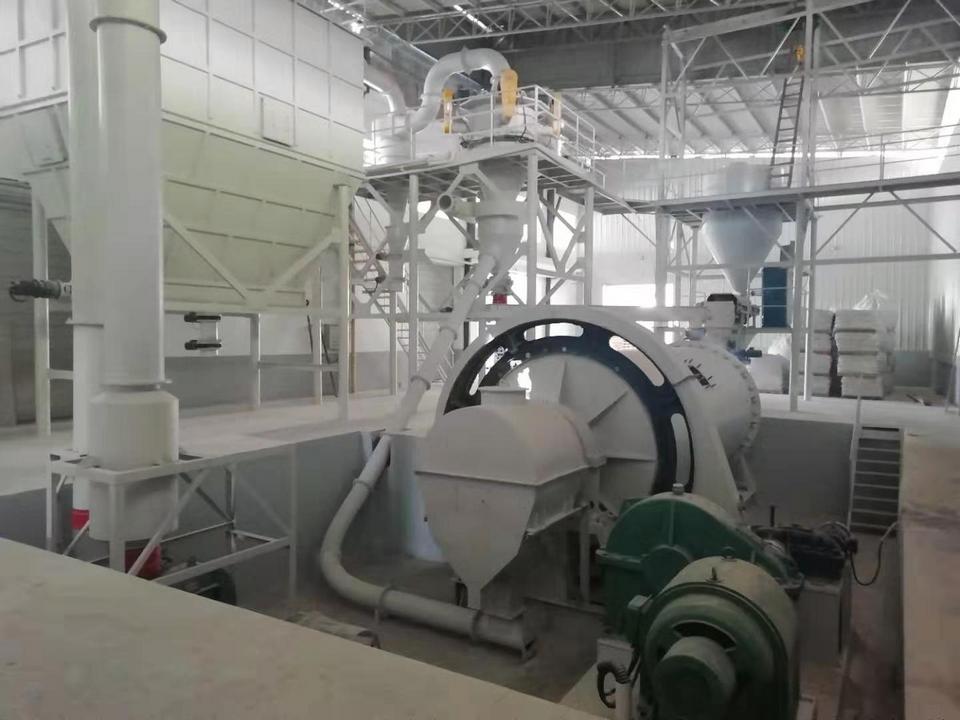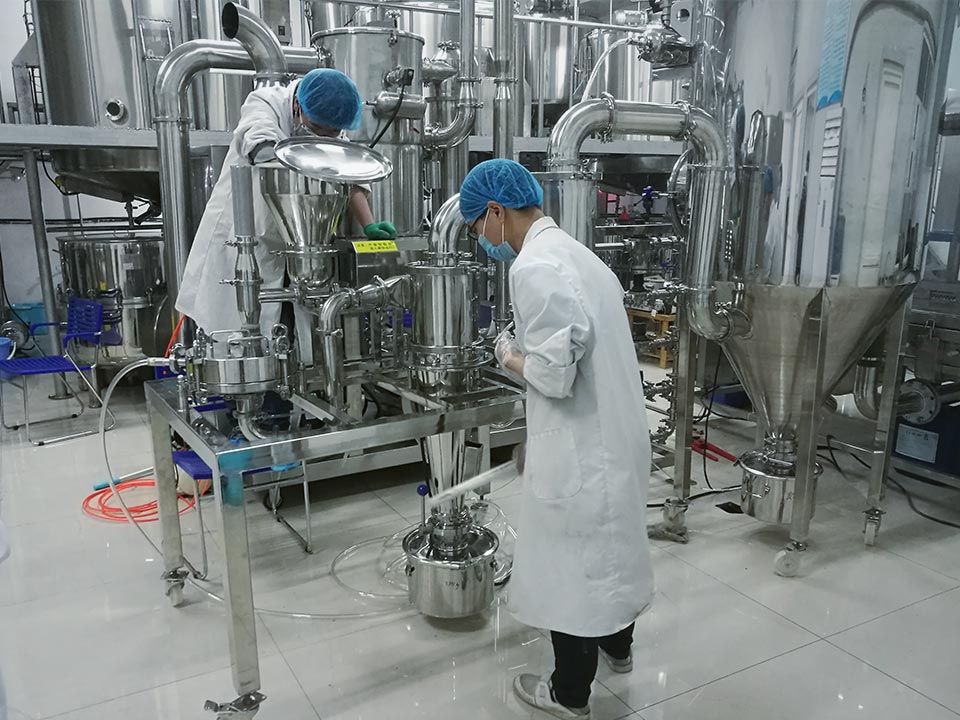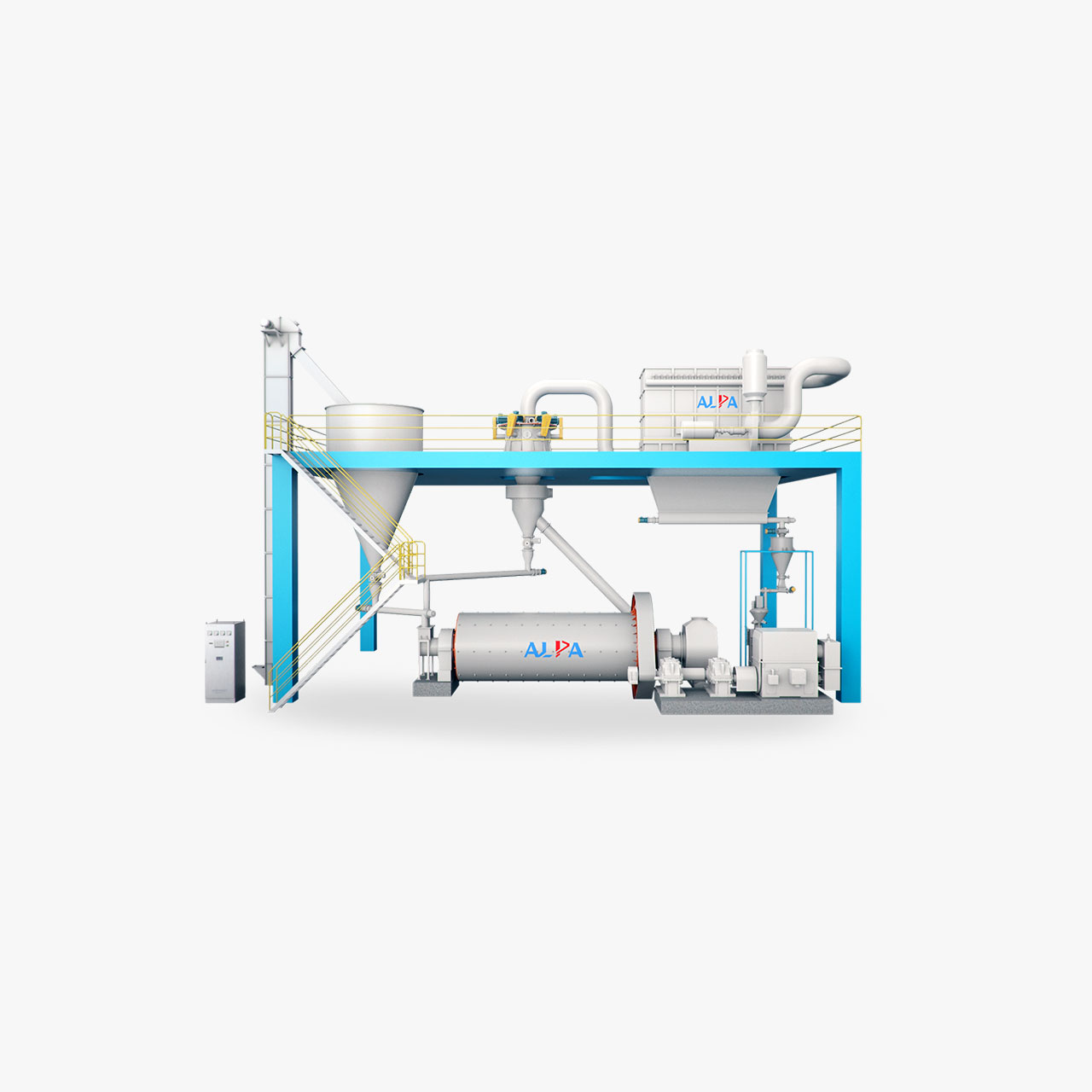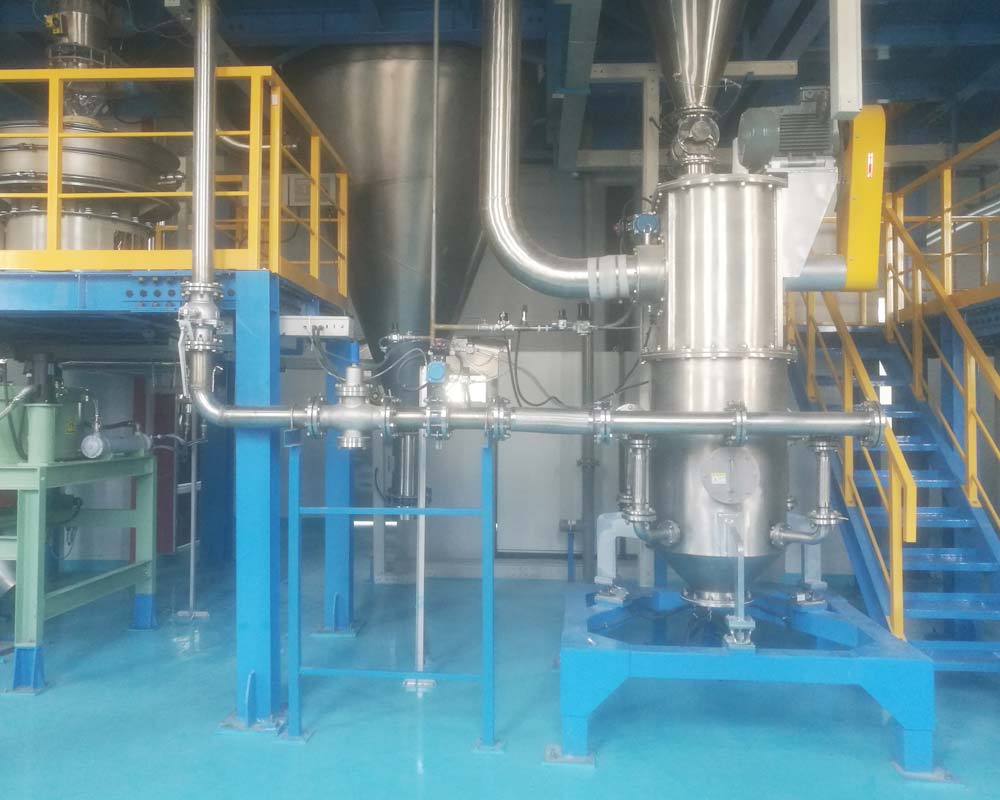Surface modification of nano calcium carbonate
Nano calcium carbonate is a new type of ultrafine solid powder material developed in the 1980s, and its particle size is between 0.01 and 0.1 μm. It is precisely due to the ultra-fineness of nano calcium carbonate particles that have produced characteristics that ordinary calcium carbonate does not have, so nano calcium carbonate is widely used in various fields.
Nano calcium carbonate has a 50-year history of development and is widely used in various fields.
| Nano calcium carbonate | Purpose | Performance improvement |
| Plastic | Good compatibility with resin, improve the rheological properties of products, etc. | |
| Papermaking | Improve the bulk density, apparent fineness and water absorption of paper. | |
| Rubber | Reinforce, fill, color, improve the processing technology and product performance. | |
| Paint | Improves the thixotropy of the blue system, the adhesion of the high-choice paint, the scrubbing resistance, and the stain resistance. | |
| Other | In the feed industry, it can be used as a calcium supplement to increase the calcium content of feed. |
Because nano calcium carbonate has the characteristics of large surface energy, low dispersibility and hydrophilic surface, it is incompletely dispersed in organic media, and nano calcium carbonate cannot be directly used in organic media.
The purpose of nano-calcium carbonate modification is to reduce the cohesion between particles and improve its dispersibility; improve surface activity; improve compatibility with other substances; improve acid resistance; prepare nano-calcium carbonate with specific crystal shapes for use in different industries.
The modification methods of nano-calcium carbonate usually mainly adopt grafting and coupling reactions, that is, connecting certain organic groups (such as carboxyl groups, etc.), coupling agents, surfactants, etc. on the surface of nano-calcium carbonate. Commonly used modifiers include surfactants, polymers, and coupling agents.
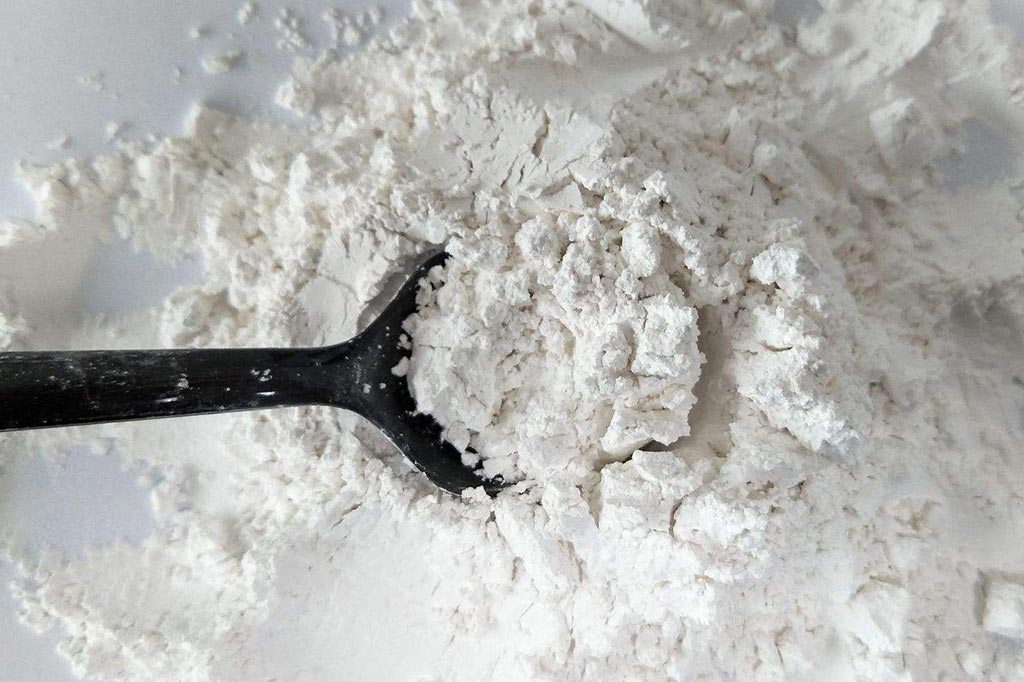
Surfactant
The surfactant chemically adsorbs or reacts on the surface of the calcium carbonate particles to form a layer of lipophilic structure, which has good compatibility with fillers and resins, and greatly reduces the viscosity of the polymer. Commonly used surfactants are fatty acids (salts), resin acids, lignin, and anionic/cationic surfactants.
Polymer
The polymer modifies the surface of the nano calcium carbonate, which can coat the surface of the nano calcium carbonate to form a complete and dense coating layer, improve dispersibility and increase acid resistance. Commonly used polymers include acrylic acid, salts, and terpolymers.
Coupling agent
Part of the groups in the coupling agent molecules react with functional groups to form strong chemical bonds, and the other part of the groups can undergo chemical reactions or physical entanglement. With the help of the monolayer of "bridging", the minerals and organisms can be combined. The very different materials are firmly combined. Commonly used coupling agents are classified into organosilicon series, titanium series, aluminum series, chromium series, etc. according to their core elements. The most commonly used coupling agents are titanate coupling agents and organosilanes.
Surface modification method
- Local chemical reaction modification method
The local chemical reaction modification method mainly uses the chemical reaction between the functional groups on the surface of the nano-calcium carbonate and the treatment agent to achieve the purpose of modification. The specific process is divided into two types: dry method and wet method.
The dry method is to put nano calcium carbonate powder into the modifier, and then put in the surface modifier for surface treatment after running. Dry modification is simple and easy, direct packaging, easy to transport, but the obtained powder is not uniform, suitable for coupling agents such as titanate.
Wet modification is to directly add the modifier to the nano-calcium carbonate solution for surface modification treatment. The modification effect of wet modification is good, but the process is complicated and the transportation is inconvenient, so it is suitable for water-soluble surfactants.
- High-energy modification method
The high-energy modification method is a method for surface treatment of fillers by means of plasma or irradiation treatment. The technology is complicated, costly, low production capacity, and unstable modification effect, so it is less used in industry.
- Mechanochemical method
The mechanochemical method is more effective for calcium carbonate with large particles. It can increase the active points and active groups on the surface of nanometer calcium carbonate, and enhance the effect of organic surface modifiers.
From the development trend in recent years, we make a simple prediction on the market trend of nano calcium carbonate in the future: from the situation in the past few years, nano calcium carbonate has been showing a growing trend, and in the future, it will be at a rate of 20%. Continued growth. The scale of the market will also continue to expand, and the hidden potential of the market will continue to be explored.
Article source: China Powder Network
What are the reasons for the vibration of the ball mill?
For the production line of the aerated concrete industry, the ball mill is an indispensable equipment in the grinding production line. However, during the production process, the transmission system sometimes vibrates greatly. So what are the reasons for the vibration of the ball mill?
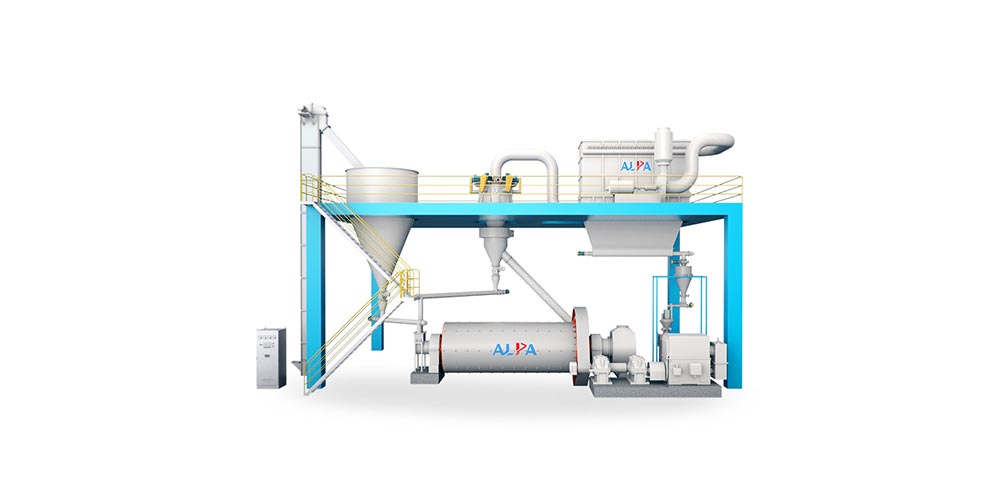
- The teeth of the gear will enter the mud during operation, resulting in poor lubrication
The ball mill is an open gear transmission device, equipped with gears and inner and outer covers, but the sealing performance is still poor. When the bushing bolts near the large gear ring are loose, the leaked mud easily enters the gear meshing surface, destroys the lubricating oil film on the tooth surface, and generates great impact noise and transmission system vibration.
- Wear of pinion bearings
There is a double row spherical roller bearing on both sides of the pinion bearing. After a period of use, the bearing parts wear out, the gap between the inner ring, the outer ring and the roller increases, and radial runout occurs when the pinion shaft rotates, which will cause the gear tip clearance to change continuously. It is prone to shock, vibration and noise, and the surface wear of gear teeth is aggravated.
- The tooth surface of the mill gear is severely worn
After the ball mill has been running for a long period of time, the upper tooth surface of the pinion gear is first ground from the concave platform, and the tooth side clearance increases. When the ball mill is running, impact vibration occurs, and a great impact sound is generated, and the wear between the tooth surfaces is aggravated.
- Vibration caused by the displacement of the transmission parts
After the ball mill works for a long time, the anchor bolts of the motor, reducer and pinion bearing seat in the transmission part will sometimes loosen, and the transmission part will move, so that the axis is not in the same straight line, and vibration occurs. The transmission system of the ball mill should be stopped for testing, and then the transmission system should be re-aligned.
- Wear of the nylon pin of the coupling
After the nylon pin works for a certain period of time, the surface of the cylinder will wear and the diameter will become smaller, which will cause shock and vibration of the coupling half. At this time, the nylon pin should be replaced in time to avoid damage to the coupling.
- Motor speed is unstable due to short circuit between turns
During operation, the motor current is unstable, and at the same time, the large and small gears' damage current fluctuations will cause large periodic vibrations.
What are the reasons for the decline in ball mill output?
The beneficiation stage is mainly divided into three stages: pre-selection, separation and post-selection. Grinding is in the pre-selection stage. Therefore, the output of the ball mill has a certain degree of influence on the mineral separation effect, and even the recovery rate and concentrate grade. Therefore, how to ensure the output of the ball mill has become a topic of concern, so what are the reasons that affect the output of the ball mill?
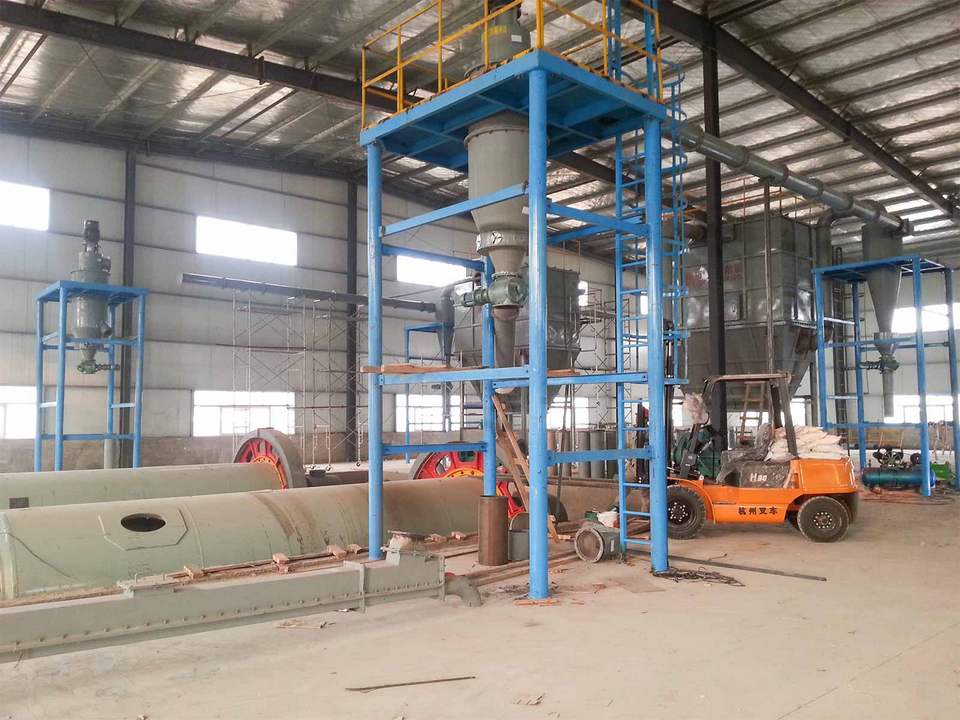
- Unreasonable design of ball mill
The ball mill can be divided into single compartment and double compartment. The length ratio of each compartment is different. In the case of single compartment, the length ratio of one compartment should be 30%-40%, and the length ratio of two compartments should be 60%~ 70%; In the case of double compartments, the length ratio of warehouse 1 and warehouse 2 is 25%~30%, and the length ratio of warehouse 3 is 45%~50% (the design ratio of each manufacturer's product may be different, the above data is only for refer to.)
If the design of the length ratio is unreasonable, it is very likely that the ratio of coarse and fine grinding of the ball mill will be unbalanced, which will cause the product to appear too thick or too fine, which will affect the output of the ball mill.
- Poor ventilation of ball mill
Under normal operation of the ball mill, due to repeated impact and friction of the medium in the cylinder, the temperature in the mill continues to rise, causing water vapor to be generated from the water-bearing material. If the ventilation effect of the ball mill is not good, the water vapor cannot be discharged in time, and the water vapor will adhere to the ball mill liner and steel balls, causing the ball or grinding phenomenon.
Solution: Control the ventilation of the ball mill, and the ball mill has a good passing effect, which can not only bring out qualified fine materials in time, but also effectively reduce the phenomenon of over-crushing and reduce the temperature of the ball mill.
- Unreasonable feeding of ball mill
During the operation of the ball mill, uniform feeding is a necessary condition to ensure the normal operation of the ball mill. If the feed is too little, the impact of the steel balls of the ball mill will increase, resulting in media waste; if the feed is too much, the grinding capacity of the ball mill will be insufficient, leading to saturation.
Solution: Need to strictly follow the feeding standard for feeding.
What should be paid attention to in the maintenance of superfine mill?
Enterprises want to improve production efficiency and reduce production costs. Effective maintenance of ultra-fine mills is a particularly important matter. So what should be paid attention to in the maintenance of specific ultra-fine mills?
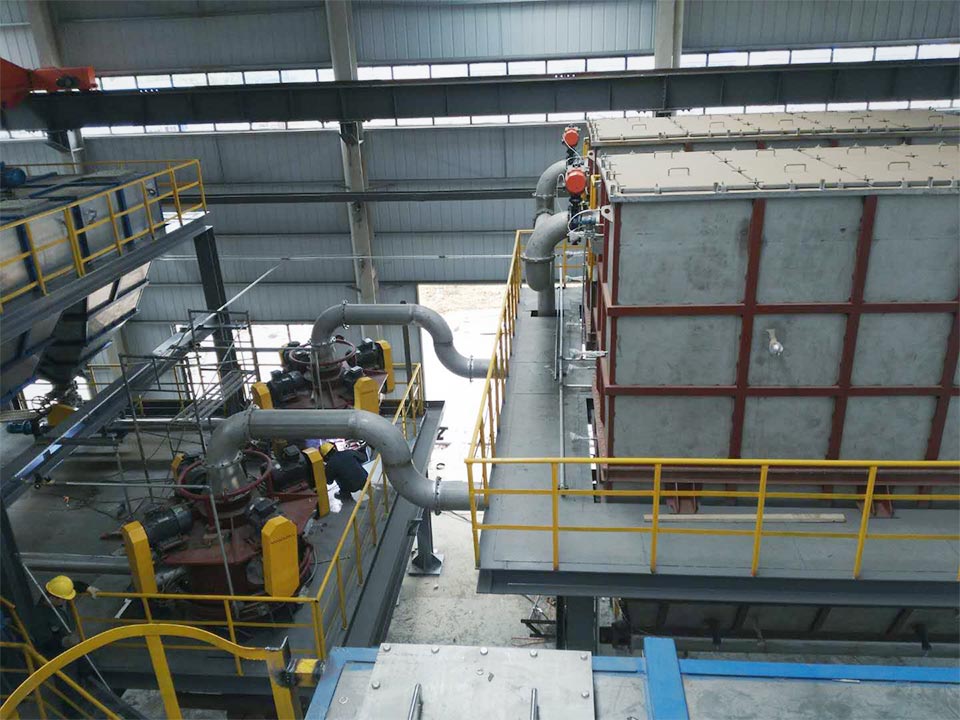
- What should be paid attention to in the maintenance of superfine mill?
(1) During the use of the ultrafine mill, a dedicated person should be responsible for establishing a post responsibility system and operating specifications. The operator must be familiar with the machine's performance, use requirements, and operating procedures. New recruits must undergo technical training and can only operate after meeting the requirements.
(2) The lubrication of the transmission parts in the accessories of the ultrafine mill must be done in place, and the lubricant should not be added too much or too little. The selection of lubricants in the summer season should be correct, and the cleaning of this part must be paid attention to. Impurities will contaminate the lubricant and affect its lubrication effect. According to the work intensity, clean it regularly and add new lubricants.
(3) Always check the back-blowing air pressure of the filter bag filter to avoid clogging of the filter bag. The decrease of the fan current will affect the output of the equipment. Usually, attention should be paid to the joints of the pipelines to be tightly sealed to ensure that there is no air leakage. Check the dust collector regularly. If the filter bag is damaged, it should be replaced in time to avoid dust leakage and pollution. The water drain switch at the bottom of the oil-water separator should drain water 2-4 times every 8 hours.
(4) Check all parts frequently, and fasten them in time if they are loose to avoid accidents. If it is found that wearing parts such as grinding rollers, grinding rings, mounting plates, and shaft pins are severely worn, the wearing parts should be replaced at the same time to ensure normal production. Clean the muffler regularly to avoid excessive resistance and affect the air volume of the system.
(5) The external working environment of the ultrafine mill should be taken to avoid outdoor production. Exposure to the sun and rain will cause varying degrees of damage to the mill. If water enters the machine, the effect will be even worse. The leaking surface of the mill also needs to be coated with anti-rust grease. If the rust is found, it should be dealt with immediately and anti-rust repair measures should be taken.
(6) The working hours of the mill should be planned in detail, and overwork should be avoided as much as possible. Overworked operation not only has low production efficiency, but also causes great damage to the machine, which is one of the reasons for shortening the service life.
- What are the advantages of superfine mills?
(1) The ultra-fine mill is a large-scale grinding equipment integrating grinding, grading and conveying. It has a vertical structure and a compact layout.
(2) The ultra-fine pulverizer starts from various angles such as grinding efficiency, wearing parts wear, maintenance and replacement parts, and achieves lower energy consumption, lower core parts wear and maintenance, and more convenient maintenance, saving customers' equipment operating costs.
(3) Repetitive grinding is reduced in the ultra-fine mill, and the particle size and chemical composition of the product are better controlled, which is convenient for stabilizing the product quality. At the same time, the grinding roller and the grinding disc are not in direct contact, and the iron content in the product is low, which effectively guarantees the whiteness and purity of the material.
(4) The ultra-fine mill runs stably with low vibration and low noise. Sealed and working under negative pressure, no dust spills. Equipped with an automatic control system to realize free switching between remote control and local control, easy to operate and save labor.
Application & preparation method of superfine silver powder
Silver is a chemical element and a transition metal. In nature, it mainly exists as silver compound ore. In industry, according to the particle size classification, silver powder can be divided into the following categories: fine silver powder, ultra-fine silver powder, ultra-fine silver powder, and nano-silver powder. According to the morphology of superfine silver powder, it can be divided into spherical silver powder and flake silver powder.
The physical properties of silver
| Physical properties | Numerical value | Physical properties | Numerical value |
| Chemical formula | Ag | Heat of vaporization | 150.58KJ/mol |
| Atomic number | 47 | Heat of fusion | 11.3KJ/mol |
| Crystal structure | Face Centered Cubic (fcc) | Specific heat capacity | 232KJ/(Kg·K) |
| Lattice constant a | 0.40362nm | Reflectivity | 0.91 |
| Relative atomic mass | 107.88 | Conductivity | 6.301x107S/m |
| Atomic radius | 0.144nm | Thermal conductivity | 429W/(m·K) |
| Outer electronic structure | 4d105s1 | Moh's hardness | 2.5 |
| Main oxidation state | +1,+2,+3 | Vickers hardness | 251MPa |
| First ionization energy | 7.567 eV | Brinell hardness | 24.SHB Mpa |
| Electronegativity | 1.93 | Expansion coefficient (25℃) | 18.9μm/(m-K) |
| Water soluble | Insoluble in water | Young's modulus | 83Gpa |
| Relative density (water = 1) | 10.49 | Shear modulus | 30Gpa |
| Melting point | 961.93 ℃ | Bulk modulus | 100Gpa |
| Boiling point | 222.12℃ | Poisson's ratio | 0.37 |
Silver also has good electrical conductivity and chemical stability. Due to the difference in morphology and particle size of ultrafine silver powder, the surface atomic arrangement of its crystal structure changes accordingly, resulting in a large number of surface defects, making the material unsaturated and chemically active, and possessing: small size effect, quantum effect, and macroscopic quantum Tunnel effect, surface effect.
As a conductive phase, silver powder is used in electronic pastes, and its properties will have a great impact on the performance of conductive pastes, especially the front silver paste of solar cells. Its application performance depends largely on the silver powder used. Nature.
The dispersibility of silver powder has an important influence on the printing and sintering of the front silver paste and the conductivity of the battery. The particle size of the silver powder will affect its tap density, thus affecting the compactness of the silver paste after sintering. The morphology of silver powder will affect its specific surface area. Particles with a large specific surface area have large surface free energy and are in an unstable state. They tend to shrink during sintering, thereby affecting the performance of the conductive paste.
Application of superfine silver powder
- Application in optics
The photosensitive paste prepared by mixing photosensitive resin with ultrafine silver powder as conductive function is printed on the master plate. After exposure and etching, the electrode pattern is continuous, the line width is uniform, and the edge is straight. It has been used as the electrode material of plasma display. In preparation.
- Application in the field of electromagnetic shielding
Ultra-fine silver powder has high conductivity. In the electromagnetic field, it can reflect the electromagnetic waves that are propagating back to the original space, thereby playing the role of electromagnetic shielding. At the same time, due to the high conductivity of ultra-fine silver powder, the magnetic permeability is relatively low. Therefore, the electromagnetic shielding effect of ultrafine silver powder is more suitable for high-frequency magnetic fields, but not for low-frequency magnetic fields whose main shielding effect is absorption loss.
- Application in the biomedical field
Ultrafine silver powder has the ability to kill bacteria, which is largely caused by the small size effect of Ag+ in the solution and nanometer ultrafine silver powder. The high chemical activity can destroy the cell membrane of the virus and make some groups on the virus DNA Loss of activity, inhibits the reproduction of the virus to achieve a sterilization effect.
- Application in the field of catalysis
For nano-silver, the essence of its catalytic process is the chemical adsorption and desorption of oxygen by silver, which can be widely used in the field of drugs and chemicals for the epoxidation of olefins, and the field of supported silver catalysts for the selective oxidation of alcohols. The field of catalysts for reducing the NOX emitted from automobile exhaust to generate nitrogen; the field of fuel cells for selective oxidation of carbon monoxide and environmental pollution treatment fields.
- Application in the field of photovoltaic power generation
The cathode material of solar cells is usually composed of conductive silver paste prepared from micron-sized spherical silver powder. The conductive silver paste is screen-printed and attached to the solar crystalline silicon wafer to form a grid (anode) through high-humidity sintering, which can convert light energy into Electrical energy.
- Applications in the microelectronics industry
Because of its high electrical conductivity and excellent heat transfer, ultrafine silver powder has been widely used in the field of microelectronics industry, such as used as conductive connection and transmission media and various electronic pastes, etc., for the development of a new generation High-performance electronic components. Utilizing the quantum properties of silver nanowires, it can be used as a connecting wire for nanoscale devices, so as to meet the requirements of the connecting wire for large specific surface area, small diameter, and uniform orientation.
- Applications in other fields
Because of its excellent thermal and electrical conductivity, ultra-fine silver powder is used in automotive rear windshield defrosting heating resistance wires, etc.; nano-silver powder can promote cell repair and is often used in the field of rehabilitation after medical operations.
Preparation method of superfine silver powder
The preparation methods of ultra-fine silver powder can be divided into physical preparation methods and chemical preparation methods. The physical methods include mechanical ball milling, evaporation and condensation, DC arc plasma, laser ablation, and atomization. Chemical methods include sonochemical method, electrolysis method, liquid phase chemical reduction method, spray thermal decomposition method, and liquid phase precipitation conversion method.
Advantages and disadvantages of different physical methods to produce ultra-fine silver powder
| Physical preparation method | Advantages | Disadvantages |
| Mechanical ball milling | Simple process, low cost, suitable for large-scale production | Wide particle size distribution, uneven performance, low efficiency |
| Evaporative condensation method | Silver powder has high purity, uniform particle size and good crystallinity | High equipment requirements, difficult for industrial production |
| Laser ablation | The process is simple, the purity of silver powder is high, and the stability is good | High cost |
| Atomization | Silver powder has high purity and good crystallinity | Limited by equipment, only micron-level silver powder can be produced |
| DC arc plasma method | High purity of silver powder, high purity of silver powder | Wide particle size distribution, high requirements for equipment, high investment |
Advantages and disadvantages of different chemical methods for preparing ultrafine silver powder
| Chemical preparation method | Advantages | Disadvantages |
| Liquid phase chemical reduction | The process is simple, the price of raw materials is low, the energy consumption is small, the parameters are easy to control, and it is suitable for large-scale production | Difficulty in process improvement |
| Spray pyrolysis | Simple process, high production efficiency, environmentally friendly | Wide particle size distribution |
| Electrolysis | The process equipment is simple, the purity of silver powder is high, and the requirement for the silver content of the raw material is low | Process energy consumption is high, production cost is high |
| Microemulsion method | Silver powder has good dispersibility and particle size can be precisely controlled | Difficulty in solid-liquid separation |
Because the liquid-phase chemical reduction method has the advantages of simple process, low raw material price, low energy consumption, easy control of parameters, and suitable for large-scale production, the current industrial ultrafine silver powder is mainly prepared by the liquid-phase chemical reduction method.
In the preparation process of ultrafine silver powder by liquid-phase chemical reduction method, the main factors affecting the performance of ultrafine silver powder are the concentration of reactants, the type of reducing agent, the reaction temperature, the type of dispersant, and the pH value of the reaction system.
As the application of silver powder in solar energy, Internet of Things and other industries continues to increase, the position and role of silver powder as a supporting material for strategic emerging industries will continue to increase, and the consumption prospects are broad.
Article source: China Powder Network
Precautions for the use of stainless steel jet mill
The stainless steel jet mill is a kind of jet mill. It is different from the ordinary jet mill only in material. The stainless steel jet mill is suitable for medicine and food or materials with requirements for purity, so is there any difference in the use of this equipment?
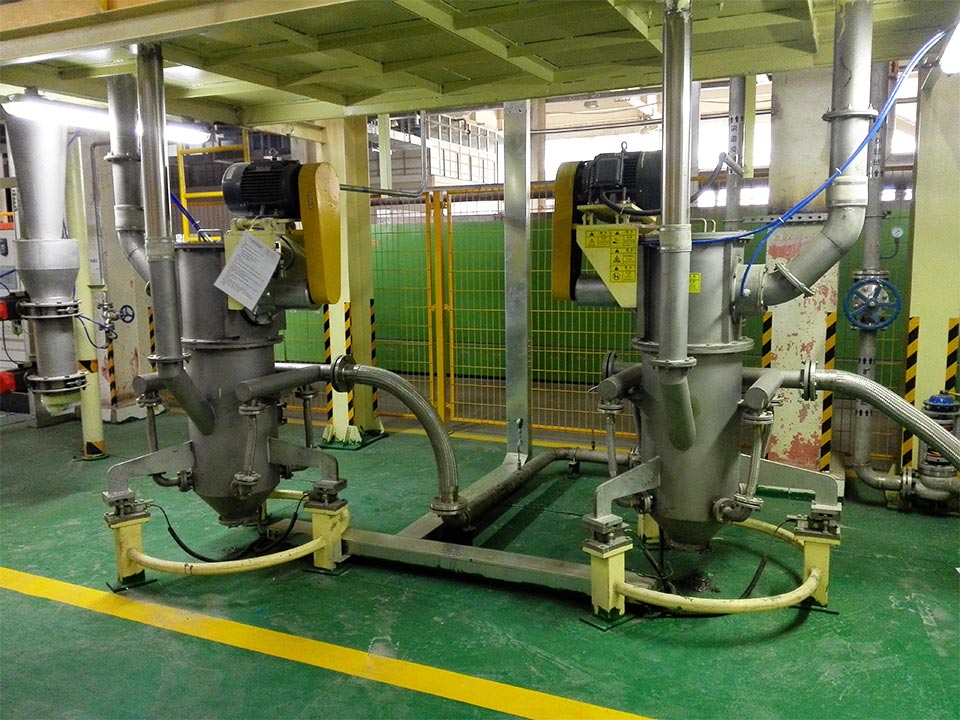
1. Before using the stainless steel jet mill, check whether all the fasteners of the machine are tightened and the belt is tight.
2. The rotation direction of the spindle must be in accordance with the direction of the arrow shown on the protective cover, otherwise it will damage the machine and may cause personal injury.
3. Check whether the electrical appliances of the stainless steel grinder are complete.
4. Check whether there are any hard objects such as metal in the crushing chamber of the stainless steel crusher, otherwise the cutters will be damaged and the operation of the machine will be affected.
5. The purity of the material must be checked before crushing, and no hard metal debris is allowed to be mixed in, so as to avoid damage to the tool or cause burning and other accidents.
6. The oil cup on the machine should be filled with lubricating oil frequently to ensure the normal operation of the machine.
7. Stop feeding before stopping the machine. If you do not continue to use it, remove the leftovers in the machine.
8. Regularly check whether the cutter and the screen are damaged. If damaged, it should be replaced immediately.
9. The machine body will vibrate slightly when in use. Be sure to tighten the machine cover connection handle to avoid accidents.
Cleaning items:
1. Cleaning other parts of the jet mill: Mainly clean the cover of the mill and the parts with screws on the outside. These areas can be cleaned by lightly brushing with a brush. If necessary, clean them with water or detergent.
2. Cleaning the cabin of the grinder. The machine room of the grinder is what we call the grinding chamber. The crushing of items is carried out in the grinding chamber, so it is the head part of the part that is mainly cleaned.
How to ensure the working efficiency of the ball mill?
Ball mills are mainly used in ore grinding and milling industries. Many materials in daily life need to be processed by ball mills. This also shows that ball mills play an important role in the industry.
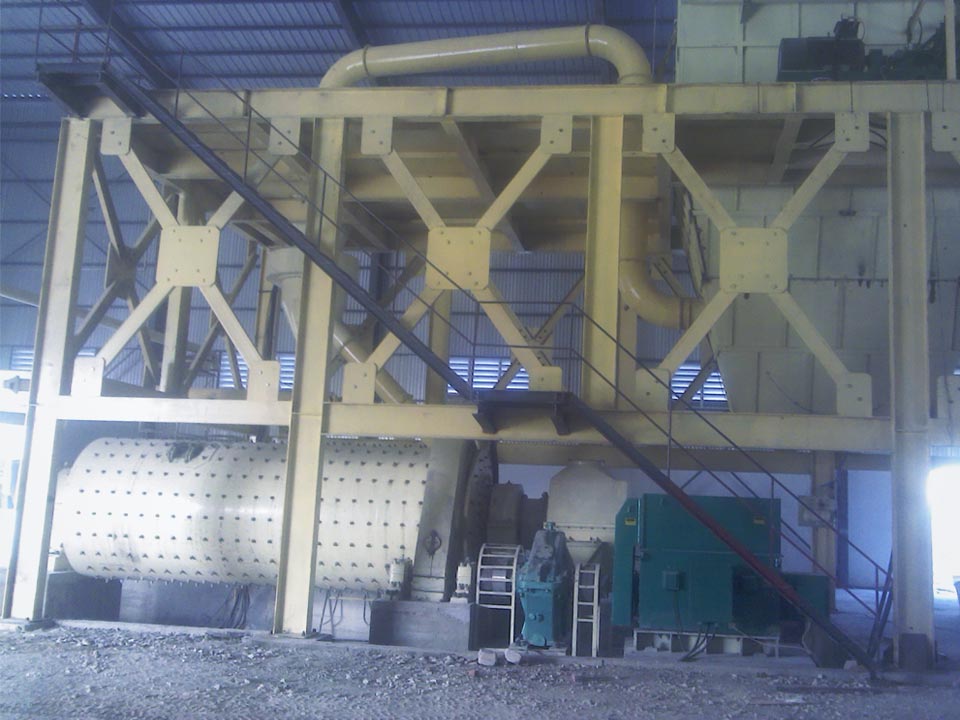
How to ensure the working efficiency of the ball mill? What are the prerequisites for the stable operation of the ball mill?
- Choose suitable ball mill equipment (determine the type of ball mill)
Ball mills can be divided into many categories according to different uses. Different types of ball mills have considerable differences in function and structure. To make the ball mills run stably and efficiently, you need to choose the correct type of ball mill.
- Selection of supporting equipment
As a stand-alone equipment for grinding ore, the main work of the ball mill is to grind the ore from large particles into small particles. However, the ore production line often includes many supporting equipment to operate together. The ore is first crushed and then enters the ball milling machine to powder, and then goes through the classification and beneficiation process. The output has a great influence. The particle size and uniformity of the crusher directly affects the quality of the feed of the ball mill. After relatively good materials enter the ball mill, the grinding time and power consumption will be relatively reduced, which improves the work efficiency of the ball mill. .
- Maintenance is very important
During the use of large-scale equipment such as ball mills, it is in direct contact with the ore, and the liner needs to be regularly inspected and replaced. If it is not replaced in time, it may damage the equipment cylinder and reduce the output. It is also necessary to check the wear of the motor, reducer gears, gear oil, bearings and bearing seats, and the oil circuit. Once there is a decrease in output or abnormal noise during the production process, it needs to be stopped immediately for inspection. Find the source of the problem, repair and replace parts in time. Therefore, the maintenance of the ball mill is a key factor affecting the efficiency of the equipment.
- Perform operations in accordance with operating procedures
The parameters of the maximum load and the longest working time of the ball mill are based on rigorous scientific calculations, which specifically involve many professional knowledge such as materials science and mechanics. Many users in order to increase output, extend the normal use cycle of the equipment or modify the equipment operating parameters by themselves, these are not advisable. It does increase the economic benefits for the user in the short term, but the life and safety of the equipment are greatly damaged. Hidden dangers have a great impact on long-term continuous production.
Cleaning method of each part of laboratory jet mill
Laboratory jet mill is a small area, easy to operate, easy to clean equipment, usually used for experiments or small batch processing. The laboratory jet mill is mainly a spiral jet mill. The machine is mainly composed of 4 parts, including the main body, feeder, gas path box, and collector. The following issues should be paid attention to when cleaning.
The main part of the grinding machine is the main part of the laboratory jet mill, which is generally made of 304 or 316L. The commonly used material in the pharmaceutical industry is 316L stainless steel, which has good corrosion resistance. However, even the best stainless steel will rust when it encounters strong oxidizers or is exposed to a humid environment for a long time. Therefore, after each sample of the grinder, it should be cleaned and dried so that it can be used again next time.
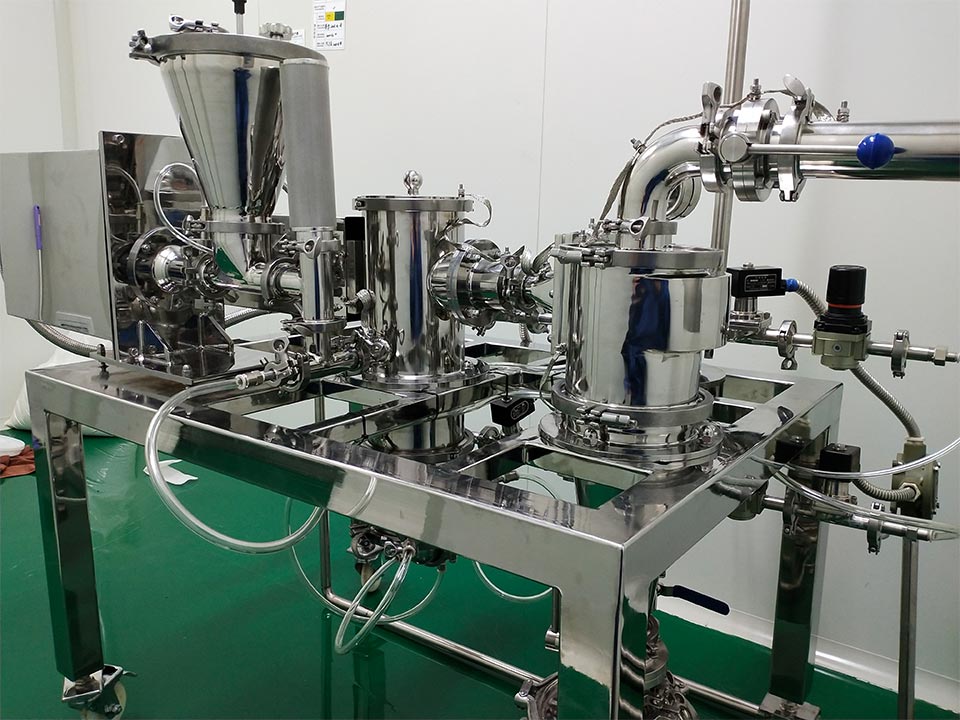
For cleaning the inner wall, it is not recommended to use a hard cleaning cloth of steel wire ball to clean the surface to avoid surface scratches. The nozzle aperture of the laboratory jet mill is very small and may not be directly cleaned. It is recommended to soak in an organic solvent after each use. It is best to place it in an ultrasonic cleaning machine for cleaner cleaning.
Feeder: There are electrical components, and the housing is equipped with a dust-proof device. When cleaning and cleaning each time, do not let water or dust enter the electrical components. The parts in contact with the same materials should be dried and stored dry after cleaning.
The gas circuit box and the shell material are generally made of stainless steel 304. The interior is the pipeline layout, pressure gauge, and pressure regulator. Each time you make a sample, there may be powder sticking to the surface. If the surface is not made Clean, long time, it will cause corrosion. In addition, the internal pipelines, some are made of hoses, have a certain degree of aging. If the machine is used for more than 5 years, pay attention to the leakage of the internal pipelines. If it sounds, replace the hose with a new one in time.
In addition to the above-mentioned normal internal surface maintenance attention, the maintenance of the collector mainly pays attention to the cleaning of the filter bag. The surface of the filter bag is covered with a layer of PTFE film. During the cleaning process, do not rub it hard to avoid damaging the surface film. If the membrane layer is found to be damaged, it should be replaced in time. It is recommended to prepare a few more filter bags. It is not recommended to use a set of filter bags with multiple varieties.
How to ventilate the ball mill
Ventilation in the ball mill is a problem that should be paid attention to during the work of the beneficiation ball mill equipment. The material generates a lot of heat during the grinding process, which greatly increases the temperature in the mill and the temperature of the material exiting the grinding, which deteriorates the operation and affects the production efficiency of the ball mill. Therefore, internal ventilation is very important in the work of the ball mill, which has a significant impact on the output and quality of the mill. It can be said without hesitation that the internal ventilation of the ball mill equipment can directly affect the efficiency of the grinding.

The ventilation effect of the ball mill is roughly in two aspects: one is to discharge the fine powder in the mill in time, so as not to affect the grinding efficiency; second, to reduce the temperature in the mill to avoid the grate of the gypsum dewatering tail bin paste ball. When the material moisture is too large and the mill has poor ventilation, the water vapor in the mill is difficult to discharge, not only the wet fine powder adheres to the grate, but also reduces the throughput and flow rate of the material per unit time. At the same time, when these grinding bodies grind materials, due to static electricity, the working surface of the liner will be attached to form a cushion layer, which will greatly weaken the impact and crushing function of the grinding bodies on the materials. When the thickness of the fine powder adhered to the surface of the lining board reaches 1mm, the impact force of the grinding body on the material can be reduced to one third when there is no material, which in turn leads to a decrease in the output of the mill and an increase in the power consumption of the grinding.
In the face of these problems of the ball mill, a simpler solution is to add an axial fan on the top of the exhaust tube of the mill tail, and at the same time seal and plug the mill rotary screen, discharge chute and other parts to prevent the short circuit of the mill ventilation due to air leakage. When the ball mill is working, the torque is transmitted to the large and small gears of the ball mill through the motor and reducer, so that the barrel of the ball mill rotates. Due to the rotation of the barrel of the ball mill and the cylinder liner, a part of the steel ball is brought to a certain height. The free fall motion produces impact force and hits the material in the cylinder, and the rest of the steel balls fall down to produce friction and the material is mixed together. As the cylinder rotates, it constantly collides and grinds with the material, so that the inside of the mill is ventilated smoothly. , It also completely solves the problem of grinding head dust. Similarly, the air lock system must also be done well, otherwise, the fan air will be drawn directly from the discharge port, forming a ventilation short circuit, and there will be not much air in the mill.
In the production of ball mills, if you have a detailed understanding of the importance of good ventilation of the ball mill, you must strengthen the management of the barrel ventilation of the ball mill and achieve reasonable ventilation, thereby improving the production efficiency of the ball mill and the pass rate of the milled materials.
The jet mill runs without heating, pollution, and easy to clean
Jet mill is a commonly used grinding processing equipment, which can be used for dry grinding treatment of various materials with Mohs hardness 1-10, especially for some materials suitable for high hardness, high purity and high added value. The particle size of the product can be controlled between D97: 2-150 microns and can be adjusted very well. The particle shape is also very good, and the particle size distribution is relatively narrow. Therefore, jet mills are favored by powder processing companies in various industries.
The jet mill and cyclone separator, dust collector and fan form a complete grinding system. The jet mill has a wide range of applications and fine finished products, covering a wide range of industries, such as metallurgy, diamond, ceramic pigments, medicine, pesticides, food, etc.
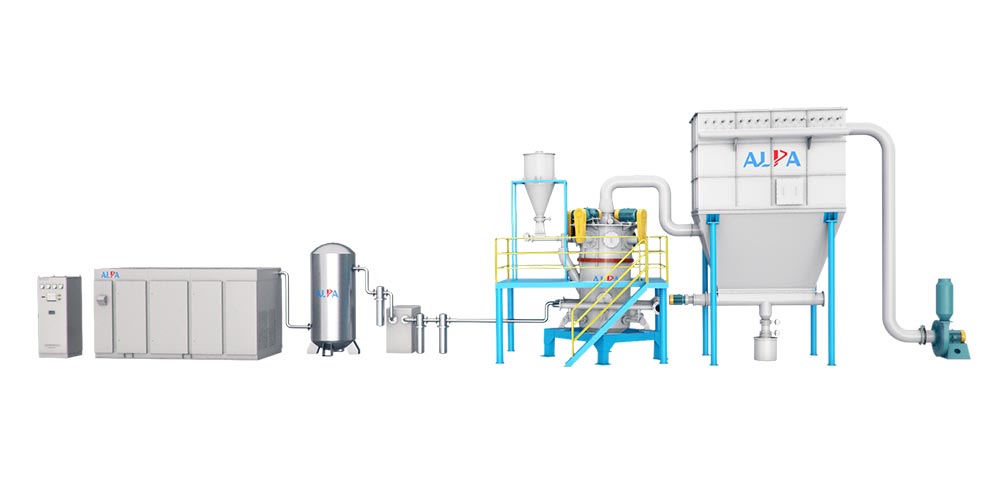
Below, I will introduce some features of the jet mill. The particles of the product can be adjusted, the particle shape is good, and the particle size distribution is relatively uniform.
- No heating, especially suitable for ultra-fine grinding of heat-sensitive materials.
When developing new materials in the laboratory, another form is to consider the way that cold air is used for mechanical pulverization and cooling, and compare the pulverization performance and the feasibility of the process, because in actual production, the mechanical pulverization function can solve many problems, as much as possible Use mechanical powder more often. Under normal circumstances, the energy consumption of the mill is very high.
- The pollution is small, because the crushing principle is the collision and crushing of the material itself. Compared with other forms of crushing, it will bring other grinding media with the blade or ball mill, and the airflow crushing pollution is the least, so it is especially suitable for the pharmaceutical and food industries.
- Easy to clean, the mill is relatively small compared to other ultra-fine pulverizers, especially the spiral jet mill, with simple structure, easy to clean, no dead ends, and can be used as a sterile medicine to pulverize.
The disadvantages are: high-power air supply equipment is required. Of course, laboratory equipment can be replaced with nitrogen gas cylinders.

